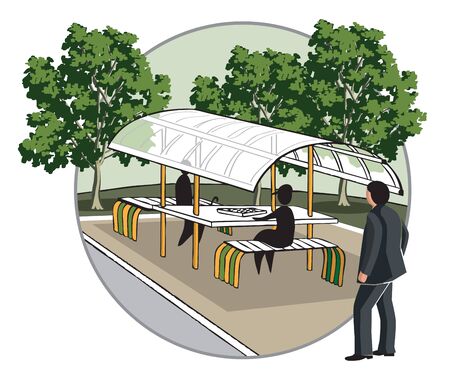Understanding Tender Bulbs and Tubers
If you love adding bursts of color and lush greenery to your urban balcony or patio, chances are youve grown tender bulbs and tubers. These are the underground storage organs of plants like dahlias, cannas, caladiums, elephant ears (Colocasia), and gladiolus—favorites for city gardeners across the U.S. Unlike hardy varieties that can survive frosty winters in the ground, tender bulbs and tubers hail from tropical or subtropical regions. They cant tolerate cold soil and freezing temperatures common in most American climates, especially USDA zones 3 through 8. Without special winter care, these beauties will likely rot or die once the chill sets in. Thats why its essential to dig them up and store them indoors during the off-season if you want to enjoy their showy blooms year after year. This guide will walk you through everything you need to know to keep your favorite tender plants thriving from one growing season to the next.
2. When and How to Dig Up Bulbs and Tubers
Knowing exactly when and how to dig up your tender bulbs and tubers is crucial for successful overwintering, especially in American climates where winter temperatures can be unpredictable. The best time to start this process is shortly after the first frost has blackened the foliage but before a hard freeze sets in. This timing allows the plants to absorb as much energy as possible from their leaves, ensuring strong regrowth next season.
Best Timing After the First Frost
In most U.S. regions, the first light frost signals its time to act. Here’s a quick reference table for common tender bulbs and tubers:
| Plant Type | Frost Indicator | Ideal Dig-Up Timeframe |
|---|---|---|
| Dahlias | Foliage turns black | Within 1 week after first frost |
| Cannas | Leaves wilt or yellow | Soon after first frost, before soil freezes |
| Caladiums | Foliage dies back naturally | After first frost or when leaves collapse |
| Gladiolus | Leaf tips brown | 1-2 weeks after flowering finishes or post-frost |
Lifting Bulbs and Tubers Safely in Small Spaces
If you garden on a balcony or urban patio, choose tools that are compact and easy to maneuver, like a hand trowel or small fork. Loosen the soil gently around each bulb or tuber, staying several inches away from the plant base to avoid accidental cuts. Carefully lift them out by hand—shaking off excess soil over a bucket for easy cleanup. For containers, simply tip the pot sideways and gently pull out the clump.
Balcony-Friendly Cleaning Methods
Cleaning bulbs and tubers is essential before storage, but messy washing isn’t ideal for small-space gardeners. Instead:
- Dry Brushing: Use an old toothbrush or soft brush to gently remove loose soil.
- Avoid Washing: Only rinse with water if absolutely necessary; allow them to air-dry thoroughly on newspaper in a sheltered spot.
- Tidy Work Area: Lay down a tarp or plastic sheet to catch debris—easy to shake out or fold up afterward.
- Quick Inspection: Check for any signs of rot or damage and discard affected sections immediately.
Pro Tip:
If you’re pressed for space, stack your cleaned bulbs in shallow trays lined with paper towels until you’re ready to prep them for winter storage. This keeps your urban balcony neat while ensuring your plants are set for next year’s growth.

3. Curing and Prepping for Indoor Storage
Once youve dug up your tender bulbs and tubers, its essential to cure them before storing indoors, especially when working with limited space like a city apartment or small balcony. Curing means allowing the bulbs or tubers to dry out and toughen their skins, which helps prevent rot during storage. To start, gently brush off any excess soil—avoid washing them with water as moisture can encourage mold. Spread your bulbs and tubers out in a single layer on newspaper, cardboard, or an old baking rack in a spot thats dry, well-ventilated, and out of direct sunlight. Basements, unused closets, or a corner by a window often work well in urban homes. Allow them to cure for about one to two weeks; youll know theyre ready when the skins feel papery and any stems or roots are completely dry.
Next, prep each bulb or tuber for storage by removing any remaining foliage and trimming long roots with clean scissors. For extra protection against pests and disease, dust them lightly with fungicidal powder—this is especially helpful if you noticed any signs of rot earlier.
To keep your indoor area tidy and organized, use stackable plastic crates or shallow cardboard boxes lined with shredded paper or peat moss to separate different varieties. Label each container so you don’t forget what’s inside come spring. If space is at a premium, try mesh bags hung from sturdy hooks in a closet or pantry—just make sure there’s airflow around each bag. Place a tray underneath your curing station to catch stray dirt and debris, making cleanup easier in tight quarters. With thoughtful curing and prepping, you can successfully overwinter your favorite blooms without turning your home into a mudroom.
4. Choosing the Right Storage Containers and Locations
Living in a city often means making the most of limited space, but that doesnt mean you have to sacrifice style or function when storing tender bulbs and tubers indoors over winter. The key is to pick storage solutions that not only protect your plants but also fit seamlessly into your urban lifestyle.
Best Storage Container Options
Bulbs and tubers need breathable containers to prevent mold and rot during their dormant months. Here are some chic, space-saving ideas perfect for apartments, basements, or garages:
| Container Type | Benefits | Urban Space Suitability |
|---|---|---|
| Mesh Baskets | Excellent airflow; stackable; visually appealing | Apartments, closets, shelves |
| Cardboard Boxes with Holes | Affordable; customizable size; easy labeling | Basements, garages, under-bed storage |
| Wooden Crates | Sturdy; reusable; rustic decor element | Balconies (covered), utility rooms, storage nooks |
| Punched Plastic Totes | Moisture-resistant; stackable; lightweight | City garages, laundry rooms, lofts |
| Paper Bags (for small collections) | Breathable; compact; simple to store in drawers or cabinets | Kitchens, pantries, small storage bins |
Selecting the Ideal Storage Location
The perfect spot for overwintering bulbs and tubers should be dark, cool (ideally between 40–50°F/4–10°C), and away from household heat sources. Urban dwellers can get creative by utilizing:
- A corner of a city garage or basement shelf where temperatures stay stable.
- A closet or pantry far from appliances that generate warmth.
- An unused cabinet or under-bed drawer lined with old towels for insulation.
- The lower shelf of a covered balcony (protected from rain and freezing).
Pro Tip:
If youre tight on space, try vertical storage! Stack mesh baskets or crates on shelving units to maximize every square inch. And remember—label each container clearly so you know which bulbs are which when spring arrives.
5. Maintaining Dormancy Through Winter
Keeping your tender bulbs and tubers healthy through winter is all about creating stable, manageable conditions—even in a small apartment or on a city balcony.
Monitor Moisture and Temperature
Check the storage medium (like peat moss, sawdust, or vermiculite) every couple of weeks to ensure it remains barely moist but not wet. Overly dry conditions can cause shriveling, while too much moisture leads to rot. Maintain a cool temperature between 40°F and 50°F—think of an unheated closet, basement corner, or a covered storage bin tucked away from direct heat sources.
Prevent Rot
Avoid stacking bulbs or tubers directly on top of one another; instead, arrange them in single layers with a bit of space for air circulation. If you notice any condensation inside storage containers, open them for a short period to let excess moisture escape.
Check for Pests or Mold
Inspect your stored bulbs and tubers monthly for early signs of mold or pests. Look for soft spots, unusual odors, or visible fuzz—remove any affected specimens immediately to prevent spread. In compact living spaces where airflow may be limited, using breathable containers (like mesh bags or cardboard boxes with holes) helps deter these problems.
City Living Storage Tip
If you’re tight on space, try storing smaller quantities in paper lunch bags labeled with the plant name and date. Place the bags in a plastic tote with the lid slightly ajar to encourage airflow. This method works well for urban dwellers wanting fresh blooms next season without sacrificing precious square footage.
6. Getting Ready to Replant in Spring
As winter fades and longer days return, it’s time to wake your stored tender bulbs and tubers from their slumber. The right timing and preparation make all the difference for lush blooms and thriving plants, especially in small urban gardens or on modern balconies.
When to Bring Bulbs and Tubers Out of Storage
Wait until the threat of frost has fully passed—typically late March through May, depending on your USDA hardiness zone. In most American cities, aim for when nighttime temperatures consistently stay above 50°F (10°C). Check your local extension office or neighborhood gardening group for precise timing.
How to Prepare Your Bulbs and Tubers for Planting
Unpack bulbs and tubers gently from their storage medium. Inspect each one: discard any that are mushy, shriveled beyond recovery, or show signs of mold. For those that look healthy but a little dry, soak them in room-temperature water for an hour or two to rehydrate before planting.
Acclimating to Urban Balcony Conditions
Give your bulbs and tubers a head start by “waking them up” indoors. Place them in trays with a bit of moist potting mix in a bright spot for a week or so before moving outdoors. This helps avoid shock and gets roots growing sooner—perfect for city dwellers working with limited space and sunlight.
Planting in Containers or Raised Beds
Urban gardeners often rely on containers or balcony rail planters. Use fresh, well-draining potting soil, and be sure each bulb or tuber is planted at the recommended depth (usually two to three times its height). Space them out enough to allow air circulation—even tight urban spaces benefit from this extra care.
Aftercare Tips
Water thoroughly after planting, then keep the soil just lightly moist until you see new growth. Gradually introduce containers or planters to outdoor conditions if you started them inside. In just a few weeks, your city garden will burst back to life—a true reward for overwintering your tender treasures indoors!

